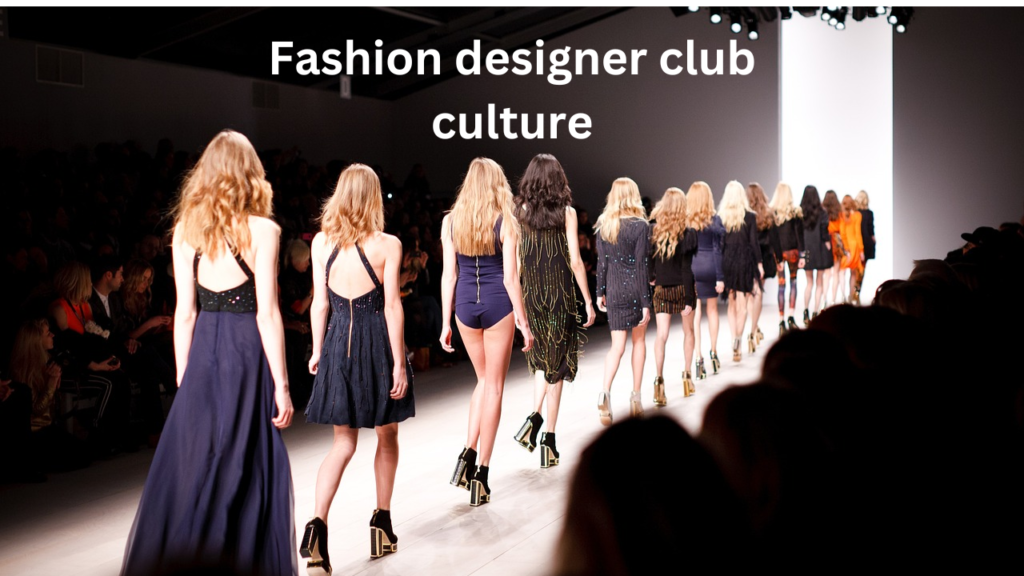Fashion designer club culture clothing is more than just a style; it’s a movement that has redefined how people express themselves in the nightlife scene. From bold patterns to gender-fluid designs, this subculture blends fashion with the energy of nightclubs, creating a space where personal expression and creativity thrive. What began as an underground movement has now found its way onto global runways, influencing how designers create collections and how people dress for a night out. This article explores the origins, key elements, and lasting impact of fashion designer club culture on modern fashion.
The Origins of Fashion Designer Club Culture Clothing
The roots of fashion designer club culture clothing can be traced back to the 1970s and 1980s when nightclubs became a hub for artistic expression. Clubs in major cities like New York, London, and Paris were not just about dancing—they were about showcasing individuality through unique and daring fashion. At places like Studio 54 and The Blitz Club, attendees used fashion to push boundaries and make statements, often wearing outfits that challenged social norms and gender expectations.
During this era, designers such as Vivienne Westwood and Jean-Paul Gaultier began to take note of the bold looks emerging from these clubs. They incorporated elements of club culture into their collections, giving birth to the fashion designer club culture aesthetic. This mix of high fashion with the gritty, rebellious edge of underground nightlife set the stage for a lasting cultural impact.
Key Characteristics
The beauty of fashion designer club culture lies in its ability to break rules and embrace creativity. Here are the key characteristics that define this subculture:
- Bold Colors and Unconventional Fabrics
One of the defining elements of designer club culture is its use of eye-catching colors and unconventional materials. Neon greens, electric blues, and shimmering metallics dominate the scene. These vibrant colors not only stand out under club lights but also communicate a sense of boldness and rebellion. - Gender Fluidity and Androgyny
In many ways, club culture has long been a safe haven for those who defy traditional gender norms. This is reflected in the clothing, which often blurs the lines between masculine and feminine. Men might wear skirts, women might don oversized blazers, and outfits are frequently styled in ways that challenge societal expectations. Fashion designer club culture embraces this fluidity, allowing wearers to express themselves without the confines of gendered fashion. - Mixing High Fashion with Street Style
One of the most exciting aspects of designer club culture is its blend of high-end designer pieces with casual streetwear. It’s not unusual to see someone pair a luxury brand item with a thrift store find, creating an eclectic mix of styles that’s both accessible and avant-garde. This combination allows individuals to curate their own unique look, drawing from a variety of influences. - Statement Accessories
Accessories play a vital role in designer club culture. From oversized jewelry to elaborate headpieces, the right accessories can elevate an outfit from ordinary to extraordinary. In the club, where the lights are dim and the music loud, these accessories become crucial for making a visual impact. Chunky necklaces, large sunglasses, and even LED-infused pieces are popular choices for clubgoers looking to stand out. - Futuristic and Reflective Materials
Reflective materials like PVC, sequins, and metallic fabrics are staples of fashion designer club culture. These materials not only catch the light in a club setting but also convey a futuristic, otherworldly vibe. The futuristic look is a nod to the idea that club culture is always ahead of the curve, pushing boundaries in both fashion and music.

Iconic Designers Influenced by Club Culture
Several renowned fashion designers have drawn significant inspiration from the fashion designer club culture movement. Their work reflects the bold, daring, and rebellious spirit of club culture:
- Vivienne Westwood: Known for her punk-inspired designs, Westwood’s work has long embodied the rebellious energy of club culture. Her use of tartan prints, leather, and unconventional cuts has become synonymous with the daring looks found in the club scene.
- Jean-Paul Gaultier: Gaultier’s collections have always blurred the lines between gender and fashion. His designs are a direct reflection of the androgynous styles seen in club culture, with models often dressed in outfits that challenge traditional gender roles.
- Alexander McQueen: The late McQueen was known for his dramatic runway shows and theatrical designs, many of which were inspired by the underground club scenes of London. His use of dark, gothic elements combined with avant-garde materials made him a favorite among those drawn to designer club culture.
The Role of Music in Club Culture Clothing
Music and fashion are deeply intertwined in the club scene, and fashion designer club culture often reflects the energy of the music playing in the background. Genres like techno, house, and EDM have heavily influenced the clothing choices of clubgoers. These fast-paced, high-energy genres demand outfits that can keep up, which is why reflective, shiny, and form-fitting garments are so popular in the club scene.
Festival and rave culture, closely linked to club culture, further demonstrate this connection between music and fashion. Attendees of events like Burning Man or Electric Daisy Carnival often wear elaborate, futuristic costumes that are a natural extension of the fashion designer club. These outfits not only enhance the overall experience but also serve as a visual representation of the music’s transformative power.
How Fashion Designer Club Culture Clothing Influences Modern Trends
Although fashion designer club culture clothing originated in underground clubs, its influence has spread far beyond. Today, many elements of this style can be seen in mainstream fashion, particularly in streetwear and high fashion collections. Designers continue to draw from the bold colors, unique silhouettes, and boundary-pushing ideas that emerged from the club scene.
Streetwear brands like Off-White and Supreme, which dominate today’s fashion landscape, incorporate aspects of fashion club culture clothing in their designs. The combination of casual and high-end pieces, as well as the emphasis on individuality, are direct descendants of club culture.
Additionally, the rise of sustainable fashion reflects the DIY ethos of club culture, where vintage and second-hand pieces were often repurposed into new looks. This approach to fashion not only allows for more creativity but also aligns with the growing movement toward ethical and sustainable fashion choices.
Conclusion:
Fashion designer club culture is more than just a fashion trend—it’s a cultural movement that celebrates individuality, creativity, and freedom of expression. From its origins in underground nightclubs to its influence on global runways, this style has left an indelible mark on the fashion world.
As we continue to see new trends emerge, the bold, risk-taking spirit of it remains at the heart of modern fashion. Whether it’s through neon colors, gender-fluid designs, or a mix of high and low fashion, this style encourages people to break free from traditional fashion norms and embrace their unique identity.
Looking ahead, fashion designer club culture clothing will undoubtedly continue to evolve, inspiring new generations of designers and fashion enthusiasts to push boundaries and redefine what fashion can be.


